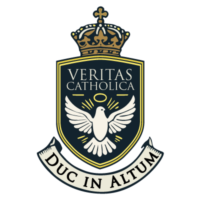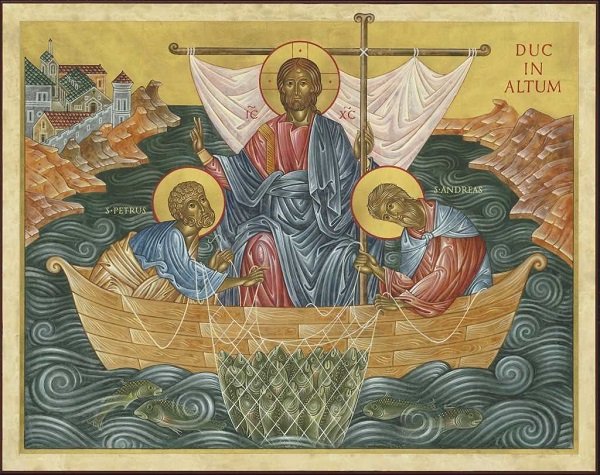The Lord’s Prayer is more than a mere formula—it’s a profound and transformative prayer that brings us into communion with God. In Chapter 5 of Jesus of Nazareth, Pope Benedict XVI provides an insightful exposition of the significance of the Lord’s Prayer in Christian life, delving into its theological depth and its spiritual and communal significance. The prayer’s Trinitarian nature is revealed in how it links Jesus’ life and teachings with our daily Christian life. Pope Benedict breaks the prayer into its seven petitions, each of which expresses a profound aspect of our relationship with God.
Introduction to the Lord’s Prayer
The Sermon on the Mount serves as a foundation for Christian living, and at its heart lies the relationship between man and God. As Pope Benedict points out, the Sermon reminds us that “man can be understood only in light of God, and his life is made righteous only when he lives it in relation to God.” This relationship is nurtured through prayer, which is central to Christian life, and Jesus offers the Lord’s Prayer as a model for true, sincere prayer.
Before giving the Lord’s Prayer, Jesus warns of two types of false prayer: the first is the ostentatious prayer done to be seen by others, and the second is the empty, mindless recitation of words. Authentic prayer, as Benedict notes, “must not be an occasion for showing off before others.” Instead, it must be personal, from the heart, and rooted in a genuine relationship with God. Yet, the communal nature of prayer is not ignored. Jesus begins the prayer with the word “Our,” emphasising that while prayer is deeply personal, it is also communal, binding us with our fellow believers and drawing us into the family of God.
“Our Father Who Art in Heaven”
The opening words, “Our Father,” encapsulate the core of Christian redemption. As Pope Benedict writes, “The one word Father contains the whole history of redemption.” Through Jesus, we are granted the privilege to address God not as a distant deity but as a loving Father. Jesus is the perfect revelation of the Father, and through Him, we reclaim our identity as children of God.
Benedict highlights the profoundness of addressing God as Father. Earthly fathers, no matter how loving, fall short of perfection. God, however, is the true Father, and He alone provides everything we need. Jesus assures us that God, who is infinitely good, will never give us “a stone when we ask for bread.” This petition speaks to the heart of what prayer is: a gradual realignment of our will with God’s. As we grow in prayer, we begin to desire what God desires, and we receive the gift of God Himself in the process.
Interestingly, Benedict also reflects on the question of whether God can be called “Mother.” While scripture uses maternal imagery to describe God’s love (such as Isaiah 49:15), the title “Mother” is never used. Benedict explains that the surrounding cultures of Israel worshipped mother deities, often associated with pantheism. Calling God “Father” emphasises His transcendence and otherness, maintaining the distinction between Creator and creation.
“Hallowed Be Thy Name”
The first petition, “Hallowed be Thy Name,” echoes the second commandment, “Thou shalt not take the name of the Lord in vain.” Benedict explores the nature of God’s name, referencing Moses’ encounter with the burning bush. When Moses asks for God’s name, he receives the enigmatic response: “I am who I am.” God’s name is both a name and a non-name, reflecting His essence as the one true God, beyond human comprehension.
Benedict explains that a name creates the possibility of a relationship, allowing us to call upon God. However, this accessibility also means that God makes Himself vulnerable. By giving us His name, God enters into a relationship with us, but this relationship can be misused. “God assumes the risk of relationship,” writes Benedict, and this risk is what makes the misuse of God’s name, and therefore His holiness, a real danger. In praying for God’s name to be hallowed, we ask that we may honour His name in our lives and actions, keeping it holy and free from misuse.
“Thy Kingdom Come”
The second petition, “Thy Kingdom Come,” reflects the heart of Jesus’ mission. Jesus inaugurates the Kingdom of God, but as Benedict explains, the Kingdom is not a physical or political entity. Instead, it is the reign of God in the hearts of those who accept His will. “Where God is absent, nothing can be good,” Benedict writes, pointing to the importance of seeking God’s Kingdom above all else.
The Kingdom of God is not simply a future reality but begins wherever Jesus is present. In this petition, we ask for God’s Kingdom to take root in our lives, just as Solomon, when offered anything by God, asked for “a listening heart” to discern between good and evil. This “listening heart” is what we pray for in this petition—a heart that is attentive to God’s will, that aligns itself with Jesus, and that seeks communion with Him. The Kingdom of God grows within us as we unite ourselves with Christ, who is its centre and life.
Benedict also draws on the words of theologian Reinhold Schneider, who describes the Kingdom as,
Christ’s continuing life in those who are his own. In the heart that is no longer nourished by the vital power of Christ, the Kingdom ends; in the heart that is touched and transformed by it, the Kingdom begins…. The roots of the indestructible tree seek to penetrate into each heart. The Kingdom is one. It exists solely through the Lord who is its life, its strength, and its centre” (Das Vaterunser, pp. 31f).
As we pray for the Kingdom to come, we invite Christ to live in us, transforming our hearts and gathering humanity into unity under God’s reign.
“Thy Will Be Done on Earth as It Is in Heaven”
This third petition expresses a longing for the world to be aligned with God’s perfect will. In heaven, God’s will is done without hesitation or error, and this prayer expresses the desire for the same to be true on earth. Benedict reflects on the profound challenge this poses, for we live in a world where human will often conflicts with God’s.
Benedict refers to Jesus’ prayer in Gethsemane, where He submits to the Father’s will despite the suffering it will bring. Jesus’ total surrender to God’s will is the model for Christian discipleship. Earth, as Benedict explains, becomes heaven when God’s will is done here, just as it is done in heaven. Jesus, whose “food is to do the will of him who sent me,” is the embodiment of heaven on earth, for His will is perfectly aligned with the Father’s.
This petition reminds us that we are often pulled away from God by our selfish desires, but in Christ, we are invited to participate in God’s will. As we pray this petition, we ask to be drawn closer to Jesus, so that our wills may be conformed to His, and in doing so, we bring a little more of heaven to earth.
“Give Us This Day Our Daily Bread”
The fourth petition acknowledges our human needs, both material and spiritual. “Daily bread” refers not only to the sustenance we need for each day but also carries an eschatological dimension. Benedict explores the Greek word “epiousios,” traditionally translated as “daily,” but which can also mean “necessary for existence” or “bread for the future.” This future bread is Christ Himself, the “true manna from heaven.”
Benedict underscores the communal aspect of this petition. When we ask for “our” bread, we pray for the needs of others as well as our own. This petition calls for solidarity with the poor and reminds us that we are all part of the body of Christ. St. John Chrysostom reminds us that “every bite of bread in one way or another is a bite of the bread that belongs to everyone.” The petition also recalls the Israelites in the desert, who received manna each day, a reminder to trust in God’s providence without hoarding for the future.
Furthermore, Benedict points to the Eucharistic dimension of this petition. The Church Fathers understood this line as a request for the bread of the Eucharist, the bread of life. By praying for our daily bread, we not only ask for physical nourishment but also for Christ, the Bread of Life, who sustains us spiritually.
“Forgive Us Our Trespasses, As We Forgive Those Who Trespass Against Us”
Forgiveness is at the heart of the fifth petition. Benedict reminds us that sin is always an offence against God, even when it takes the form of harm against others. Sin leads to guilt, and guilt demands atonement, often creating a vicious cycle of retaliation. Only forgiveness can break this cycle.
Benedict highlights the parable of the unforgiving servant as a reminder that the debt we owe to God is far greater than any wrong done to us. God’s infinite mercy in forgiving our sins calls us to forgive others in return. This petition is not just a moral exhortation but a Christological one, as it points to Christ’s sacrifice on the Cross. Forgiveness is a form of healing that requires active participation—both for the one who forgives and the one forgiven. Through forgiveness, we participate in the mystery of the Cross, where Christ bore the weight of sin to bring about reconciliation.
“And Lead Us Not Into Temptation”
The sixth petition has often puzzled many Christians because it seems to suggest that God leads us into temptation. However, as Benedict explains, God does not tempt us. Temptation comes from the devil, but God allows us to be tested to strengthen and purify us. As seen in the story of Job, trials can serve to mature and deepen our faith.
In this petition, we acknowledge our weaknesses and ask God not to allow us to be tested beyond our strength. We also ask for God’s protection, knowing that our human capacity is limited. Pope Benedict references St. Cyprian, who interpreted this petition as a recognition that “the enemy can do nothing against us unless God has allowed it beforehand.” God permits trials to purify us, but we ask that He be with us, protecting us from falling into sin.
“But Deliver Us from Evil”
The final petition, “Deliver us from evil,” is a cry for protection against the forces of evil that threaten us. Benedict connects this petition to the apocalyptic imagery of the dragon in the Book of Revelation, representing the ultimate evil. While the immediate threat of Roman persecution has passed, the presence of evil remains in the world today.
Benedict notes that this petition is not just about physical or earthly evils but about the deeper spiritual evil that seeks to separate us from God. We pray to be delivered from the Evil One, whose goal is to rob us of our faith. St. Cyprian said, “Once we have asked for and obtained protection against evil, we are safely sheltered against everything the devil and the world can contrive.”
This final petition brings us full circle, back to the first three petitions, where we seek God’s Kingdom, His will, and the sanctity of His name. By asking for deliverance from evil, we reaffirm our trust in God’s power to save and protect us.
Conclusion
The Lord’s Prayer, as explained by Pope Benedict XVI, is a prayer that encompasses all aspects of Christian life—our relationship with God, our needs, our struggles, and our hope for salvation. Each petition reveals a deep theological truth and invites us to enter into communion with Jesus, through whom we pray to the Father, guided by the Holy Spirit. This prayer is not just words to be recited but a path to living in alignment with God’s will, seeking His Kingdom, and receiving His grace.
See the other chapter reviews of the first volume on Jesus of Nazareth here.




